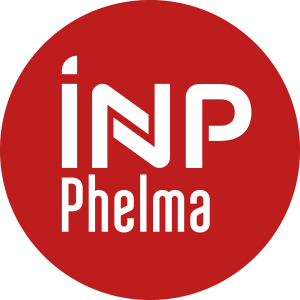Number of hours
- Lectures 14.0
- Tutorials 4.0
ECTS
ECTS 2.0
Goal(s)
Multispectral imaging consists in acquiring several images of the same scene using tens of narrow (e.g. 10 nm) and contiguous spectral bands (e.g. higher than 100 nm) in the visible range (380-780 nm). This enables to characterize objects by their color appearance or by their spectral reflectance function and to study the influence of lighting conditions, viewing geometry, sensor sensibility and material properties on color appearance. This course will cover the main issues related to the acquisition, the processing and the visualization of multispectral images. A variety of study cases (e.g. food industry, medical imaging, automotive industry, cultural heritage) will illustrate this course.
Refining the concept, hyperspectral imaging, also called imaging spectroscopy, consists in acquiring simultaneously hundreds of images of the same scene using hundreds of narrow and contiguous spectral bands. This enables a fine description of the materials that are observed. This field is blooming in a number of applications, from planetary exploration to material sciences in industry, from quality control to astrophysics, from biomedical imaging to airborne and satellite remote sensing. This course will cover the main issues related to the signal and image processing challenges raised by these data and cover the whole chain, from basic notions in instrumentations to a variety of applications (the applications being addressed during the lab sessions).
Content(s)
The core of the course will focus on the following aspects:
- color theory, interaction between light an matter
- spectral unmixing with linear and non linear mixing models
- dimension reduction and sparse representations
- classification of hyperspectral data
- anomaly detection
- high performance computing
The course will also include basic notions of physics and vision, which are important to understand and take into account when designing an algorithm (for instance, spectral unmixing is a source separation problem, but not all source separation techniques are suited to this problem).
Prerequisites
Basics in digital signal and image processing.
Semester 9 - The exam is given in english only 
Evaluation: one individual written evaluation (1h, without any document)
And one individual presentation of a research article during the lab sessions.
Devoir surveillé*50% + Controle Continu*50%
Semester 9 - This course is given in english only 
Digital Color Imaging Handbook, Gaurav Sharma, Raja Bala, CRC Press, 23 déc. 2002
Color Imaging: Fundamentals and Applications, Erik Reinhard, Erum Arif Khan, Ahmet Oguz Akyuz, Garrett Johnson, CRC Press, 22 juil. 2008
Image numérique couleur: de l'acquisition au traitement, Alain Trémeau, Christine Fernandez-Maloigne, Pierre Bonton, Dunod, 2004
Signal and Image Processing in Hyperspectral Remote Sensing, Wing-Kin Ma; José M. Bioucas-Dias; Jocelyn Chanussot; Paul Gader, IEEE Signal Processing Magazine, Year: 2014, Volume: 31, Issue: 1



